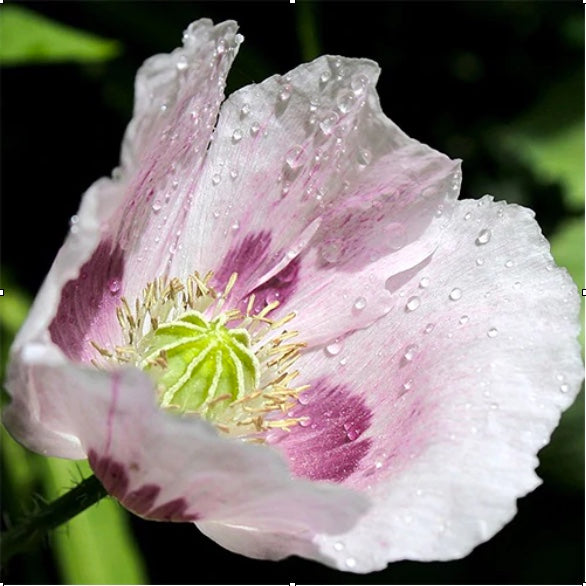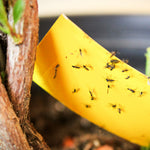If you are looking for a whimsical garden charmer, look no further than the poppy patch. Poppies evoke an easy-going feeling of artistry, folklore and cottagecore that few other plants can match in our climate, and the seeds are easy to grow with just a few simple guidelines for success!
When I say a few simple guidelines, I should emphasize that these are important steps - poppies are not easy to grow if you start them indoors as you would many other annual flowers. There are two main reasons for this: poppies require a cool period followed by warming weather to germinate well and also do poorly if their roots are disturbed after emerging. So, direct seeding to the garden in mid to later April is the best way to go in our area.
To establish poppies, sow the seeds in garden beds amended with ample organic material. You can sow as soon as the soil is thawed enough to ruff up the surface with a rake, which is a good idea ahead of planting. Many gardeners mix the tiny poppy seeds with fine sand or potting mix before sowing, for more even distribution when scattering. It helps to gently pre-water your bed before sowing, which encourages the seeds to stick near the soil surface; both seed-to-soil contact and light are required for good germination.
Make sure to mark your freshly seeded poppy patch and water gently through spring, to encourage the seeds to germinate and then establish quickly.
Poppies look best in group plantings, and it works nicely to mix your poppy seeds to achieve tons of style dynamics, height variation and slightly different bloom times. Bachelor Buttons are a perfect companion to poppies and can be direct-seeded at the same time.
One last poppy planting detail: they do require 6-8 hours of full sun to be spectacular, so be sure to situate your poppies in a full sun location, particularly one where the sun starts early in the day (southeast).
There are many types of poppies. Here are some popular ones to grow in our area:
Shirley poppies

These are cultivated forms of the wild poppy, Papaver rhoeas otherwise known as field poppies or corn poppies (the most famous field poppy is the Flanders type, associated with Remembrance Day). These annual poppies naturalize easily, so once sown they will appear year after year if seed-heads are left after maturing. The original Shirley poppies were famously selected and hybridized in the late 19th century from wild plants and studied closely in the earliest days of genetic science. Today, Shirley poppies are popular in wildflower mixes and cottage gardens.
Opium or breadseed poppies

Whether you regard opium poppies as infamous, notorious or world-changing, all terms would likely apply fairly. Papaver somnifermum has a long and storied history as the source of opium, which of course is an incredibly important raw material for the production of analgesic medications but also addicting opioids. The seeds are also used extensively by humans as a food ingredient... just think about your last poppy seed bagel. Opium poppies are perfectly legal to grow in home gardens, just don't harvest any latex from the seed heads (that is illegal and dangerous). In fact, most ornamental opium poppies have far less opium content compared to selections grown for medicinal purposes. No matter how you look at it, the flowers of this poppy are showstoppers! Shake seeds out of dried pods onto your fall beds, for more control over re-seeding.
California poppies

California poppies are in fact from an entirely different genus than "real poppies". The botanical name for these beauties is Eschcholzia californica. It is worth noting that California poppies are North American wildflowers, while Papaver species all come from Europe or Asia. The showy blooms make an incredible display during the cooler parts of summer and may rebloom late in the season. If seed heads are left on, California poppies can naturalize in our zone - particularly in sandy or loamy gardens.
So - the golden rule - go ahead and plant amazing poppies... just don't start these seeds indoors!








